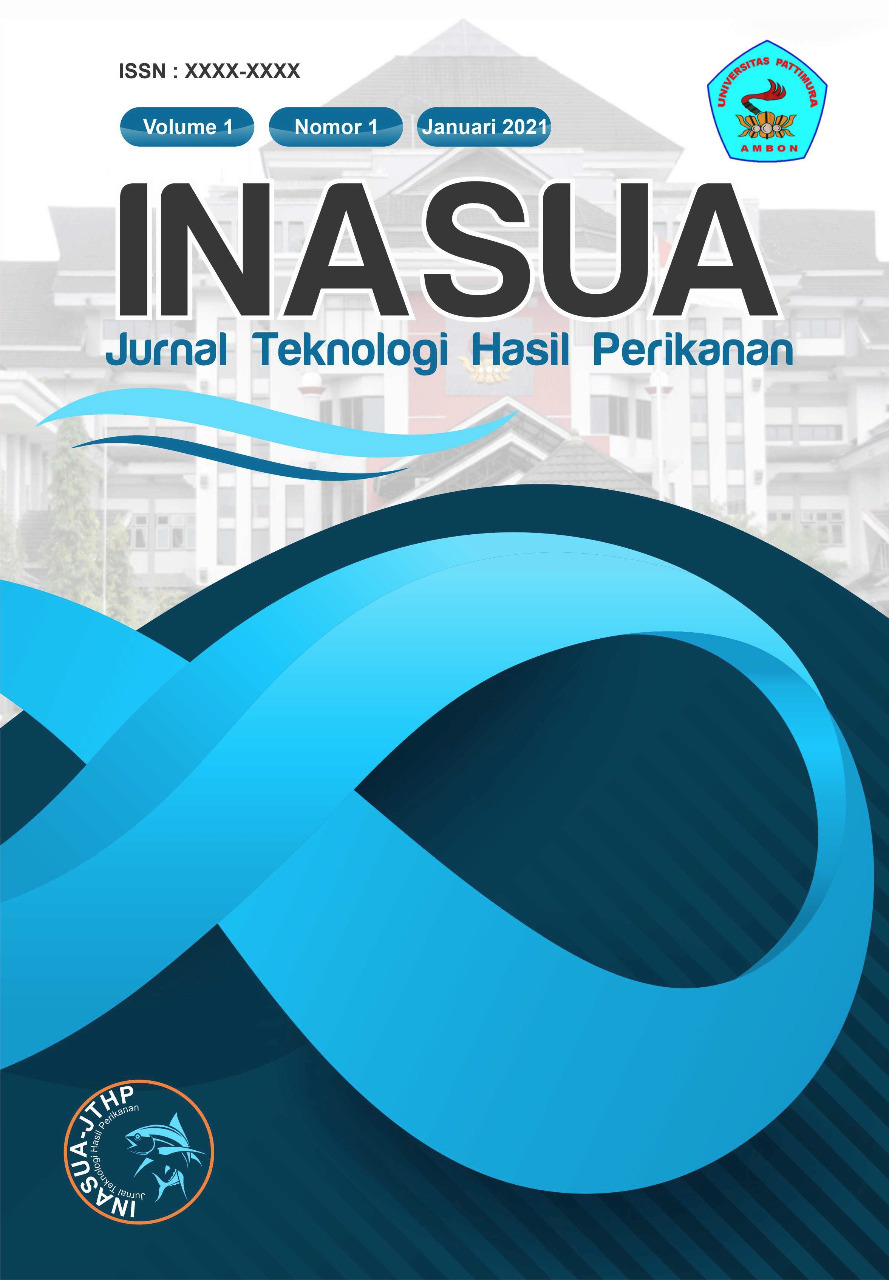KOMPOSISI KIMIA DAN PROFIL ASAM AMINO TERASI UDANG ASAL DESA NAMARA KABUPATEN KEPULAUAN ARU
CHEMICAL COMPOSITION AND AMINO ACIDS PROFILE FROM SHRIMP PASTE YIELDED IN NAMARA VILAGE, ARU ISLANDS REGENCY
Abstract
Salah satu hasil laut yang berpotensi di Kabupaten Kepulauan Aru adalah udang rebon. Udang rebon oleh masyarakat Kab Kepulauan Aru diolah menjadi terasi. Proses pengolahan terasi oleh masyarakat Kep Aru, dilakukan dengan cara pencampuran udang rebon basah dan kering (1:1), ditumbuk didalam lesung kayu sampai berbentuk pasta, dan disimpan atau difermentasi pada suhu ruang selama 1-2 minggu, setelah itu di cetak, dijemur selama kurang lebih 2-3 hari dan dikemas secarara tradisional dengan menggunakan daun kering. Hasil analisis proksimat, terdiri dari kadar protein 34,00%, kadar lemak 4,10%, kadar air 24,00%, dan kadar abu 13,9%. Kandungan Asam Amino Essensial yang dominan yaitu Lisin (2,85%), Leusin (2,34%) dan Valin (1,6%) sedangkan pada Asam Amino Non Essensial yaitu Glutamat (3,40%), asparat (2,32%), dan alanin (1,58%).
Downloads
Copyright (c) 2022 to Authors

This work is licensed under a Creative Commons Attribution-ShareAlike 4.0 International License.







